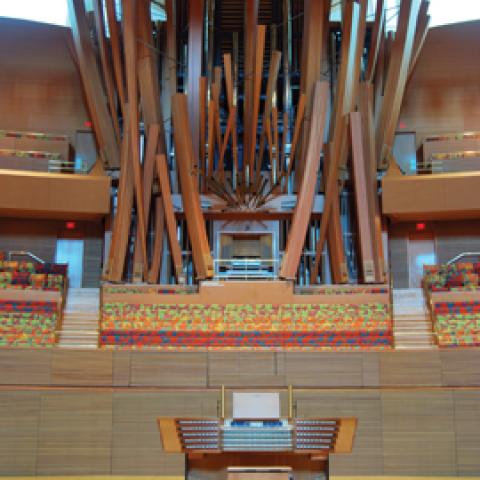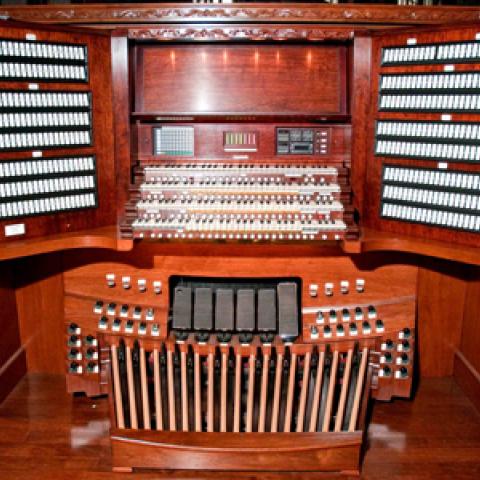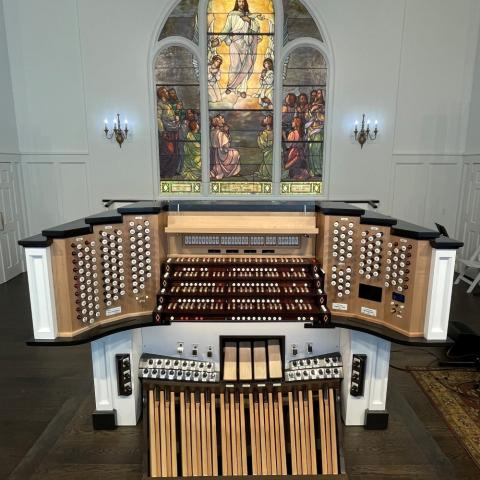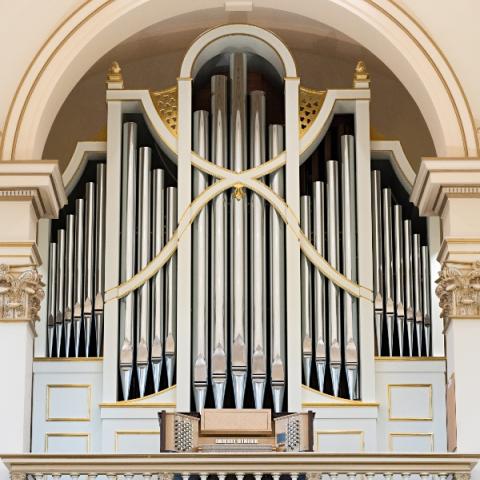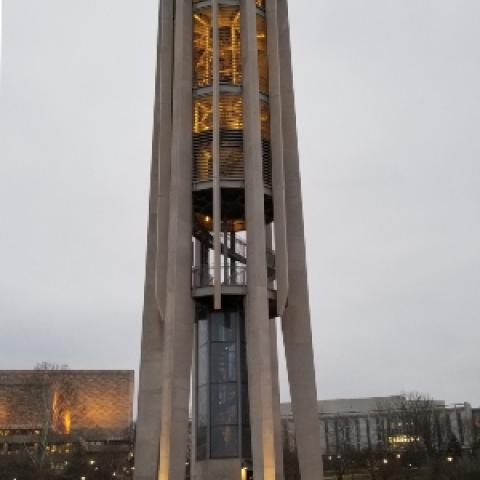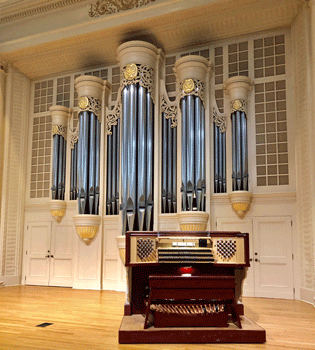
Elon University, Elon, North Carolina, has chosen Solid State Organ Systems to provide a technological and musical solution for their Casavant organ in Whitley Auditorium. The university sought to have organ music for large events in other locations on campus. In consultation with Casavant Frères, Limitée, the solution was realized with the addition of two Solid State Portal Systems and a dedicated data and audio network.
Two additional consoles were built by Casavant: a two-manual and pedal console in Schar Hall (a basketball stadium roughly a mile from the auditorium) and a one-manual console without pedal in Koury Gymnasium (a small multipurpose gymnasium roughly a quarter mile from the auditorium). The first challenge presented was for the consoles to communicate to the pipe organ. Through the MultiSystem II relay network, each console was able to connect via a dedicated CAT5e cable to the pipe organ without latency in the transmission of data. The pipe organ sound is then captured live from microphones in Whitley and amplified directly into both or either of the additional rooms.
Each portable console has access to the main organ combination action, recalling piston settings on each memory level and creating new piston settings. While the two-manual console has a pedalboard, the one-manual console does not. To accommodate this, the AutoBass feature was enabled on the one-manual console, thus bringing the lowest 18 pedal notes to the manual. Additionally, three ventils were added so to remove organ divisions from the one manual keyboard. All of this is represented on the Solid State Portal Touchscreen, a virtual stop-jamb.
For information: 703/933-0024; [email protected].

